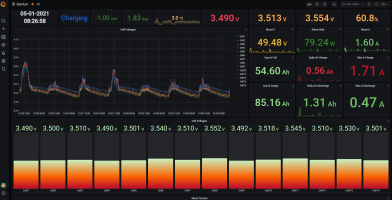View attachment 23184
Personally I think Redpacket's post should be nominated for the "Post of the Year Award"
Sometimes it takes a wakeup call like the one being discussed to re-evaluate how we build our batteries.
A Li-Ion cell no matter what form factor is an energy storage device. Think of it as a small gas tank. Petrol tank for the non US.
A gas tank stores gasoline which is a form of liquid energy. In its liquid state it is dangerous but also quite manageable as long as you follow certain guidelines for containment and safety.
The same goes with a Li-Ion battery. In its pristine state it is a very efficient energy storage device. Happily accepting electrons to store and on demand release them. Now it will do this give and take in a safe manner if certain rules and guidelines are followed. No question we see it everywhere in all kinds of appliances. Our watches on our wrists have a mini gas tank( li-Ion button cell) in them. I certainly don't have a fire extinguisher in my pocket just in case my watch catches fire. Now I know this is an extreme example but it proves the point. Li-Ion battery building is not a "Just throw it together and it will work" exercise. Careful planning and most important proper cell analysis is paramount.
I am not saying everyone should do this but I keep a record of every cell that goes into my battery. I know the initial voltage, the initial AC IR, the mAh results from a capacity test, the voltage and IR after the capacity test, the voltage and IR of the cell after a >25 day SD check and the voltage and IR of the cell as it goes into the final build sometimes a couple of months later. Any cell in the final check that doesn't pass these tests does not make it into my powerwall battery.
Overkill you say?
Maybe but I can tell you one thing I sleep well knowing what the condition of my cells are. Also in the future
if I have a catastrophic failure I should be able to determine what cell/s may have caused the problem.
I also agree with monitoring your battery and the packs in a very close manner. I think Batrium does a very good job at this but as far as visualization over time the reporting is lacking. Not that the data is not stored just that it takes a bit of fanagelig to get the data into a visual format for easy analysis.
Weather and Sun have been somewhat dismal in the US NE but here is a chart of my battery and the packs for the last 7 days. Can you pull that up in a batrium interface? No, but it can be collected via UDP, node red, influx and grafana. If need be I can go back to the beginning of the battery installation and extract that data in visual format. If there was a pack within this battery that has a SD/Heater in it I think it would be obvious especially at night when the battery gets drawn down to cutoff voltage. I would see a large voltage drop over the evening stretch rather than a nice even correlation
Wolf
View attachment 23185View attachment 23187
 You either need high accuracy temp sensors or you need to move the air slowly. So its a decision to take if you want to have slow or fast response. We dont know which one is better here neither since there arent many studies regarding it. But doing 0.1C is not an issue. And if you add some logic you can vary the flow as well.
You either need high accuracy temp sensors or you need to move the air slowly. So its a decision to take if you want to have slow or fast response. We dont know which one is better here neither since there arent many studies regarding it. But doing 0.1C is not an issue. And if you add some logic you can vary the flow as well.  As long as you have the packs properly arranged its easily noticeable over x time and volume of air at 0.1C resolution
As long as you have the packs properly arranged its easily noticeable over x time and volume of air at 0.1C resolution 






